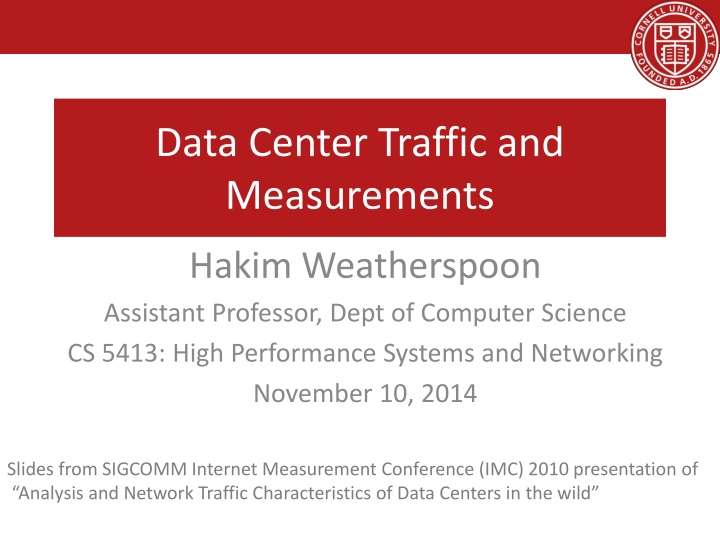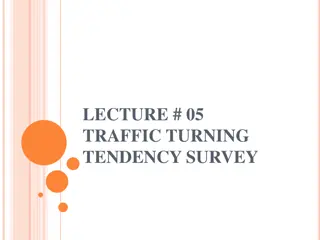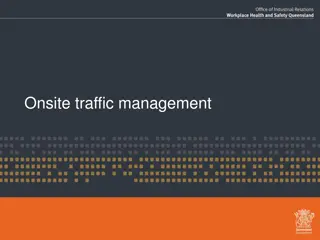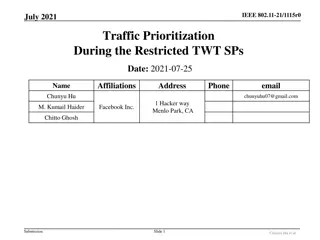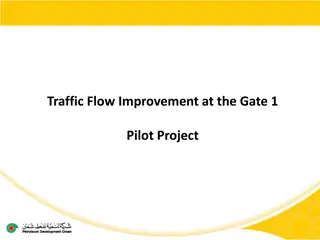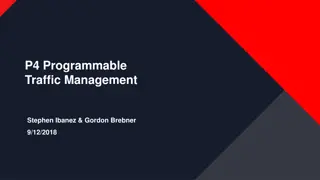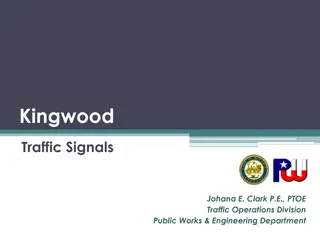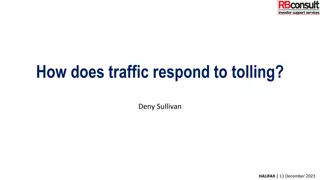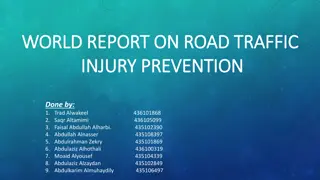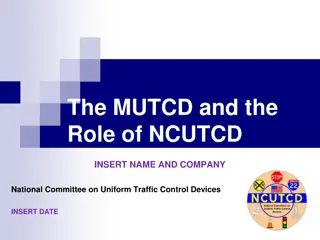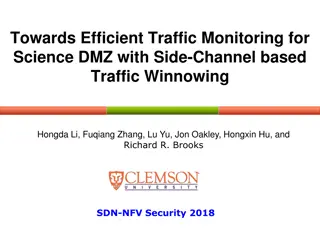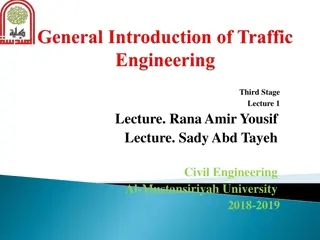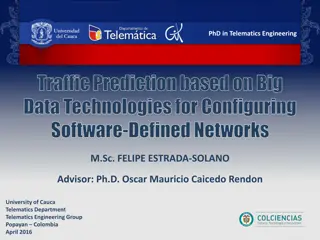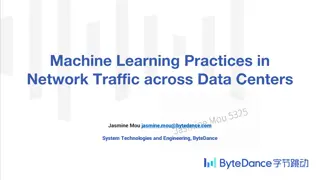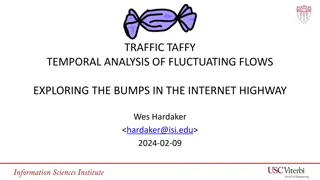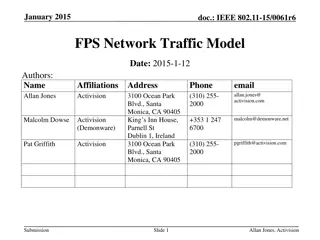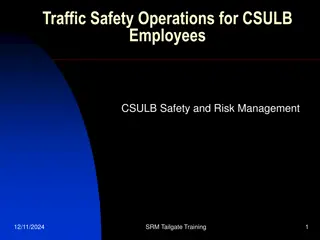Data Center Traffic Analysis and Insights
Data centers play a crucial role in various applications and services, requiring a deep understanding of their traffic characteristics and measurements. This presentation explores the importance of data centers, the need for better traffic engineering techniques, and key takeaways from studying data center traffic behavior. Insights reveal intriguing patterns such as traffic distribution within racks, packet sizes, core link utilization, and routing optimizations. The canonical data center architecture provides a structural overview, while the dataset of studied data centers highlights the diversity in locations and device counts.
Download Presentation

Please find below an Image/Link to download the presentation.
The content on the website is provided AS IS for your information and personal use only. It may not be sold, licensed, or shared on other websites without obtaining consent from the author.If you encounter any issues during the download, it is possible that the publisher has removed the file from their server.
You are allowed to download the files provided on this website for personal or commercial use, subject to the condition that they are used lawfully. All files are the property of their respective owners.
The content on the website is provided AS IS for your information and personal use only. It may not be sold, licensed, or shared on other websites without obtaining consent from the author.
E N D
Presentation Transcript
Data Center Traffic and Measurements Hakim Weatherspoon Assistant Professor, Dept of Computer Science CS 5413: High Performance Systems and Networking November 10, 2014 Slides from SIGCOMM Internet Measurement Conference (IMC) 2010 presentation of Analysis and Network Traffic Characteristics of Data Centers in the wild
Goals for Today Analysis and Network Traffic Characteristics of Data Centers in the wild T. Benson, A. Akella, and D. A. Maltz. In Proceedings of the 10th ACM SIGCOMM conference on Internet measurement (IMC), pp. 267-280. ACM, 2010.
The Importance of Data Centers A 1-millisecond advantage in trading applications can be worth $100 million a year to a major brokerage firm Internal users Line-of-Business apps Production test beds External users Web portals Web services Multimedia applications Chat/IM
The Case for Understanding Data Center Traffic Better understanding better techniques Better traffic engineering techniques Avoid data losses Improve app performance Better Quality of Service techniques Better control over jitter Allow multimedia apps Better energy saving techniques Reduce data center s energy footprint Reduce operating expenditures Initial stab network level traffic + app relationships
Take aways and Insights Gained 75% of traffic stays within a rack (Clouds) Applications are not uniformly placed Half packets are small (< 200B) Keep alive integral in application design At most 25% of core links highly utilized Effective routing algorithm to reduce utilization Load balance across paths and migrate VMs Questioned popular assumptions Do we need more bisection? No Is centralization feasible? Yes
Canonical Data Center Architecture Core (L3) Aggregation (L2) Edge (L2) Top-of-Rack Application servers
Dataset: Data Centers Studied DC Role DC Name EDU1 EDU2 EDU3 PRV1 PRV2 CLD1 CLD2 CLD3 CLD4 CLD5 Location Number Devices 22 36 11 97 100 562 763 612 427 427 10 data centers Universities US-Mid US-Mid US-Mid US-Mid US-West US-West US-West US-East S. America S. America 3 classes Universities Private enterprise Clouds Private Enterprise Internal users Univ/priv Small Local to campus Commercial Clouds External users Clouds Large Globally diverse
Dataset: Collection SNMP Poll SNMP MIBs Bytes-in/bytes-out/discards > 10 Days Averaged over 5 mins DC Name EDU1 EDU2 EDU3 PRV1 PRV2 CLD1 CLD2 CLD3 CLD4 CLD5 SNMP Packet Traces Yes Yes Yes Yes Yes No No No No No Topology Yes Yes Yes Yes Yes Yes Yes Yes Yes Yes Yes Yes Yes Yes Yes No No No No No Packet Traces Cisco port span 12 hours Topology Cisco Discovery Protocol
Canonical Data Center Architecture Core (L3) SNMP & Topology From ALL Links Aggregation (L2) Packet Sniffers Edge (L2) Top-of-Rack Application servers
Applications Start at bottom Analyze running applications Use packet traces BroID tool for identification Quantify amount of traffic from each app
Applications 100% 90% 80% AFS NCP SMB LDAP HTTPS HTTP OTHER 70% 60% 50% 40% 30% 20% 10% 0% PRV2_1 PRV2_2 PRV2_3 PRV2_4 EDU1 EDU2 EDU3 Differences between various bars Clustering of applications PRV2_2 hosts secured portions of applications PRV2_3 hosts unsecure portions of applications
Analyzing Packet Traces Transmission patterns of the applications Properties of packet crucial for Understanding effectiveness of techniques ON-OFF traffic at edges Binned in 15 and 100 m. secs We observe that ON-OFF persists 13
Data Center Traffic is Bursty Understanding arrival process Range of acceptable models Data Center Off Period Dist ON periods Dist Inter-arrival Dist Prv2_1 Lognormal Lognormal Lognormal What is the arrival process? Heavy-tail for the 3 distributions ON, OFF times, Inter-arrival, Lognormal across all data centers Prv2_2 Lognormal Lognormal Lognormal Prv2_3 Lognormal Lognormal Lognormal Prv2_4 Lognormal Lognormal Lognormal EDU1 Lognormal Weibull Weibull EDU2 Lognormal Weibull Weibull EDU3 Lognormal Weibull Weibull Different from Pareto of WAN Need new models 14
Packet Size Distribution Bimodal (200B and 1400B) Small packets TCP acknowledgements Keep alive packets Persistent connections important to apps
Canonical Data Center Architecture Core (L3) Aggregation (L2) Edge (L2) Top-of-Rack Application servers
Intra-Rack Versus Extra-Rack Quantify amount of traffic using interconnect Perspective for interconnect analysis Extra-Rack Edge Application servers Intra-Rack Extra-Rack = Sum of Uplinks Intra-Rack = Sum of Server Links Extra-Rack
Intra-Rack Versus Extra-Rack Results 100 90 80 70 60 Extra-Rack Inter-Rack 50 40 30 20 10 0 EDU1 EDU2 EDU3 PRV1 PRV2 CLD1 CLD2 CLD3 CLD4 CLD5 Clouds: most traffic stays within a rack (75%) Colocation of apps and dependent components Other DCs: > 50% leaves the rack Un-optimized placement
Extra-Rack Traffic on DC Interconnect Utilization: core > agg > edge Aggregation of many unto few Tail of core utilization differs Hot-spots links with > 70% util Prevalence of hot-spots differs across data centers
Persistence of Core Hot-Spots Low persistence: PRV2, EDU1, EDU2, EDU3, CLD1, CLD3 High persistence/low prevalence: PRV1, CLD2 2-8% are hotspots > 50% High persistence/high prevalence: CLD4, CLD5 15% are hotspots > 50%
Prevalence of Core Hot-Spots 0.6% 0.0% 6.0% 0.0% 24.0% 0.0% 0 10 20 30 40 50 Time (in Hours) Low persistence: very few concurrent hotspots High persistence: few concurrent hotspots High prevalence: < 25% are hotspots at any time
Observations from Interconnect Links utils low at edge and agg Core most utilized Hot-spots exists (> 70% utilization) < 25% links are hotspots Loss occurs on less utilized links (< 70%) Implicating momentary bursts Time-of-Day variations exists Variation an order of magnitude larger at core Apply these results to evaluate DC design requirements
Assumption 1: Larger Bisection Need for larger bisection VL2 [Sigcomm 09], Monsoon [Presto 08],Fat-Tree [Sigcomm 08], Portland [Sigcomm 09], Hedera [NSDI 10] Congestion at oversubscribed core links
Argument for Larger Bisection Need for larger bisection VL2 [Sigcomm 09], Monsoon [Presto 08],Fat-Tree [Sigcomm 08], Portland [Sigcomm 09], Hedera [NSDI 10] Congestion at oversubscribed core links Increase core links and eliminate congestion
Calculating Bisection Bandwidth Core Bisection Links (bottleneck) Aggregation Edge App Links Application servers If traffic (App ) capacity(Bisection needed at the bisection > 1 then more device are
Bisection Demand Given our data: current applications and DC design NO, more bisection is not required Aggregate bisection is only 30% utilized Need to better utilize existing network Load balance across paths Migrate VMs across racks
Insights Gained 75% of traffic stays within a rack (Clouds) Applications are not uniformly placed Half packets are small (< 200B) Keep alive integral in application design At most 25% of core links highly utilized Effective routing algorithm to reduce utilization Load balance across paths and migrate VMs Questioned popular assumptions Do we need more bisection? No Is centralization feasible? Yes
Related Works IMC 09 [Kandula`09] Traffic is unpredictable Most traffic stays within a rack Cloud measurements [Wang 10,Li 10] Study application performance End-2-End measurements
Before Next time Project Interim report Due Monday, November 24. And meet with groups, TA, and professor Fractus Upgrade: Should be back online Required review and reading for Wednesday, November 12 SoNIC: Precise Realtime Software Access and Control of Wired Networks, K. Lee, H. Wang and H. Weatherspoon. USENIX symposium on Networked Systems Design and Implementation (NSDI), April 2013, pages 213-225. https://www.usenix.org/system/files/conference/nsdi13/nsdi13-final138.pdf Check piazza: http://piazza.com/cornell/fall2014/cs5413 Check website for updated schedule
